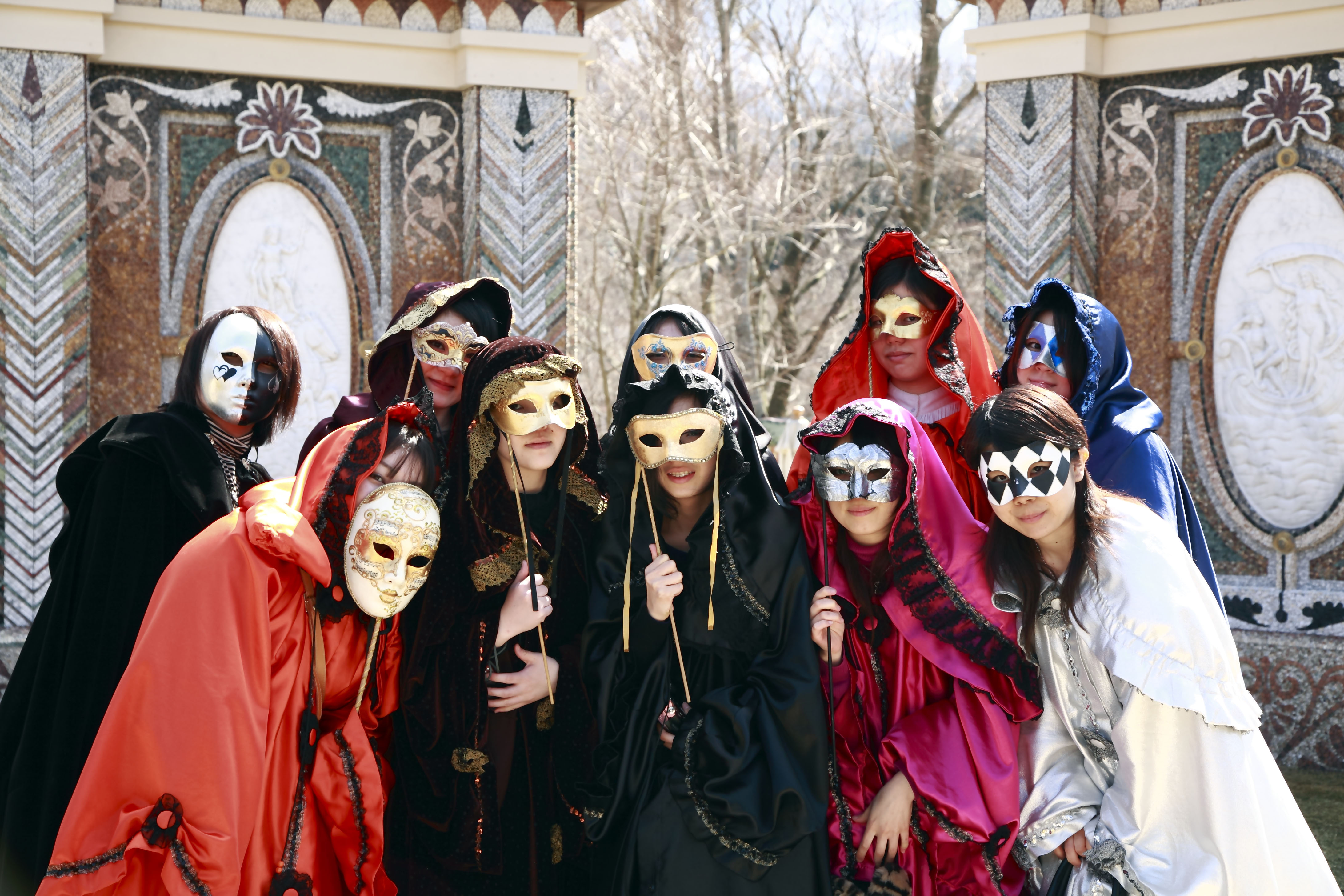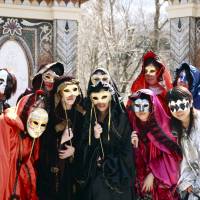The Venetian Glass Museum in Hakone, Kanagawa Prefecture, is hosting a Carnevale di Venezia (Venetian Carnival) — a recreation of one of the oldest and most well-known Italian festivals, which takes place before the Roman Catholic tradition of fasting at Lent.
The original carnival dates back to the 13th century and is famous for its use of masks, which were donned by revelers to conceal their social status and identity — often so they could play tricks on each other. The festival fell into decline from 1798 when Austria took control of Venice, and was eventually banned in the 1930s under the rule of Benito Mussolini. In 1979, however, a group of Venetian residents and fans of the festival revived the carnival to make it the popular event it is today.
For the Hakone version, around 100,000 Venetian masks have been imported from Venice for an exhibition. Allessandro Callegari, a renowned mask-maker from Venice, will also be publicly creating masks, which will be available for purchase from Dec. 27 to Jan. 6., while visitors can learn how to design their own original ones. Fancy-dress costumes and brightly colored masks will also be available for visitors to try on for photo opportunities.
Other highlights include performances of canzone (Italian songs) in the museum restaurant as well as Venetian-glass workshops.
Carnevale di Venezia takes place from Dec. 27 to April 13 at the Venetian Glass Museum, which is a 25-min. local bus ride from Hakone-Yumoto Station. Entrance is ¥1,300. Reservations may be required for different events. For more details call 0460-86-311, or visit www.ciao3.com/event/carnevale_di_venezia/index.html.

















With your current subscription plan you can comment on stories. However, before writing your first comment, please create a display name in the Profile section of your subscriber account page.